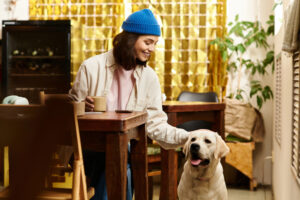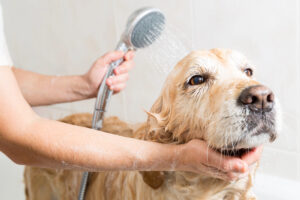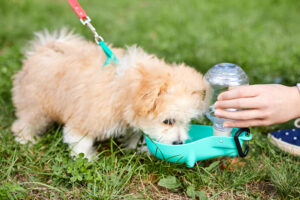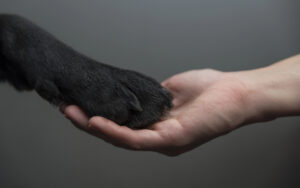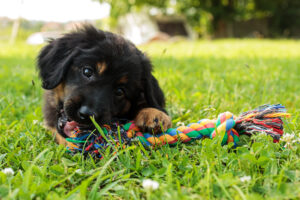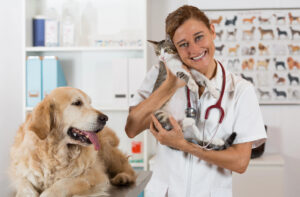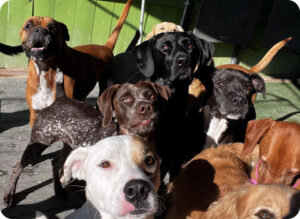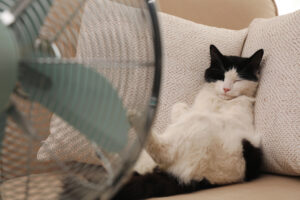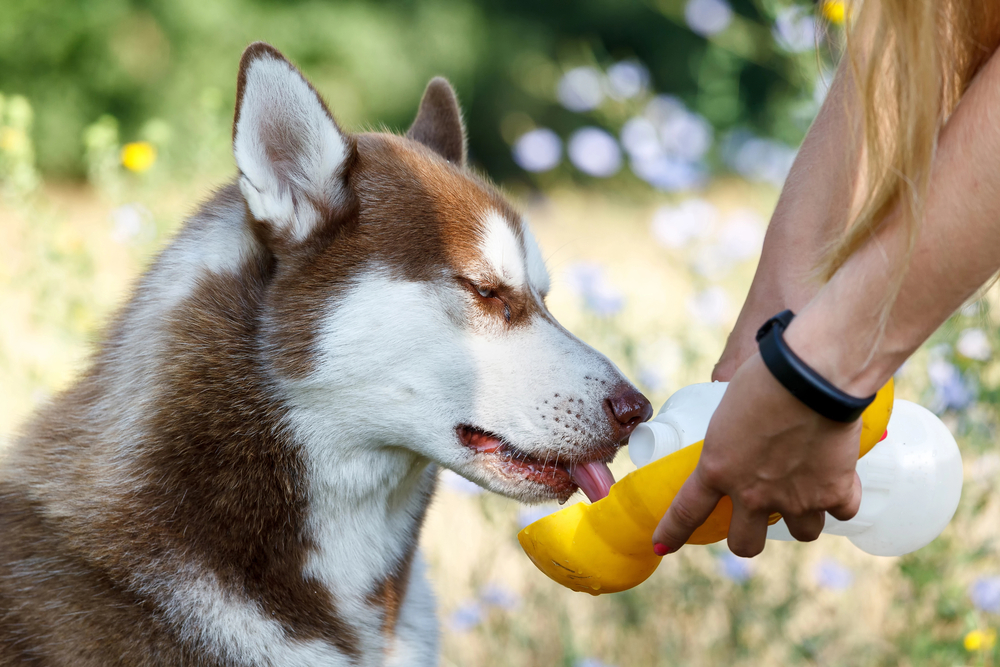
How to Know if Your Dog is Overheating and the Right Way to Cool Them Down
We always think about our dogs’ health and safety when we have them as pets. Making sure they don’t get too hot is very important for their health, especially during the warmer months. Learn how to keep them safe, healthy, and happy throughout summer.

Boarding Clients!*Discount does not apply during holiday/peak rate periods.

Recognizing the Signs of Overheating in Dogs
The first thing you can do to avoid problems caused by heat is to learn the signs of overheating. In contrast to people, dogs don’t sweat. Instead, they mostly keep themselves cool by panting. Here are some important signs that your dog may be too hot:
Excessive Panting and Drooling: It’s normal to breathe out and out, but too much of it, especially if it’s accompanied by thick, sticky saliva, can mean that your dog is overheating.
Increased Heart Rate: When dogs are under a lot of heat stress, their heart rate naturally goes up.
Bright Red or Pale Gums and Tongue: If a dog’s gums get too hot, they may change color. At first, they may turn bright red, but as the problem gets worse, they may turn pale or even blue.
Lethargy and Weakness: When dogs are too hot, they might feel unusually tired, weak, or unwilling to move.
Vomiting and Diarrhea: Having stomach problems is a very bad sign that your dog is too hot.
Confusion or Disorientation: If your dog seems lost or confused, or if it has trouble walking, it could be suffering from heat exhaustion or heatstroke.
Collapse or Seizures: Too much heat can hurt a dog and make it collapse or have seizures.
Immediate Steps to Take if Your Dog is Overheating
If you see any of these signs, you need to help your dog calm down right away to avoid more problems. What you should do is this:
Move to a Cooler Environment: Get your dog out of heat right away. Give them a cool room or a shady place to stay.
Offer Water: Provide fresh, cool water for your dog to drink. Make them take small sips, but don’t force them to drink.
Cool Your Dog with Water: Use cool (not cold) water to wet your dog. A bathtub, a hose, or wet towels will work. Pay attention to places like the belly, paws, and armpits that have less fur. Do not use ice-cold water because it can narrow your blood vessels and trap heat inside.
Use Fans: Use fans to move more air around your dog. This will help the water evaporate and cool them down more quickly.
Check for Continued Signs of Distress: Keep a close eye on your dog to see if it shows any more signs of distress. If your dog doesn’t start to feel better in a few minutes, you should take him to the vet right away.
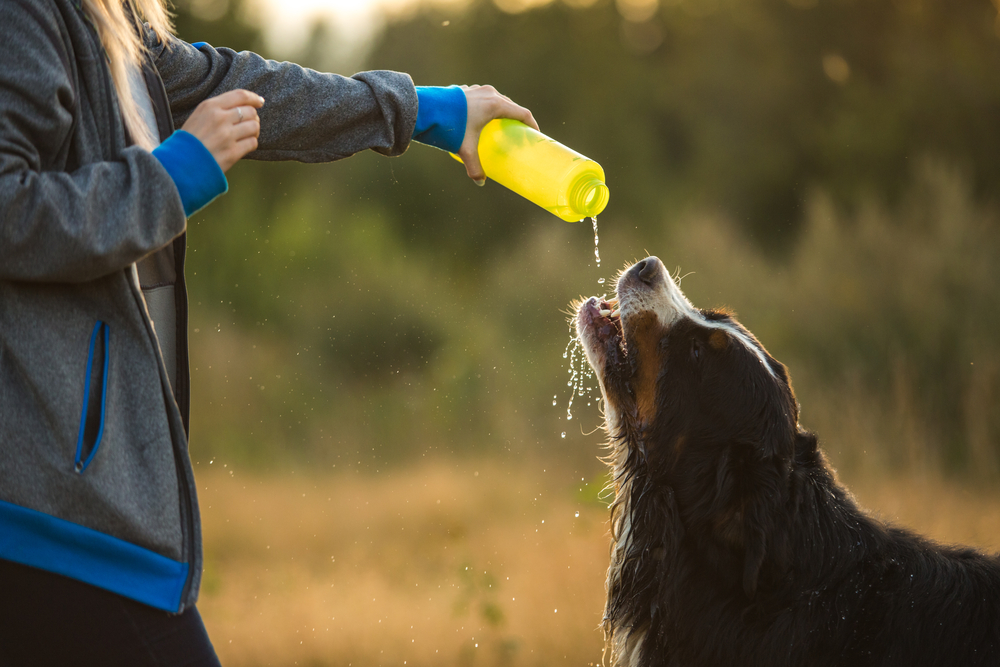
Measuring Your Dog’s Temperature
You can accurately tell if your dog is too hot by taking their rectal temperature. A dog’s body temperature should be between 101 and 102.5 degrees Fahrenheit. A temperature of more than 104 degrees is dangerous and needs to be fixed right away.
First Aid Kit for Heat Emergencies
A first-aid kit for pets can save their lives. You might want to include the following:
- Digital Thermometer: For accurate temperature readings.
- Electrolyte Solutions: To help rehydrate your dog.
- Instant Ice Packs: For cooling your dog down in emergencies.
- Cooling Towels: For immediate relief from heat.
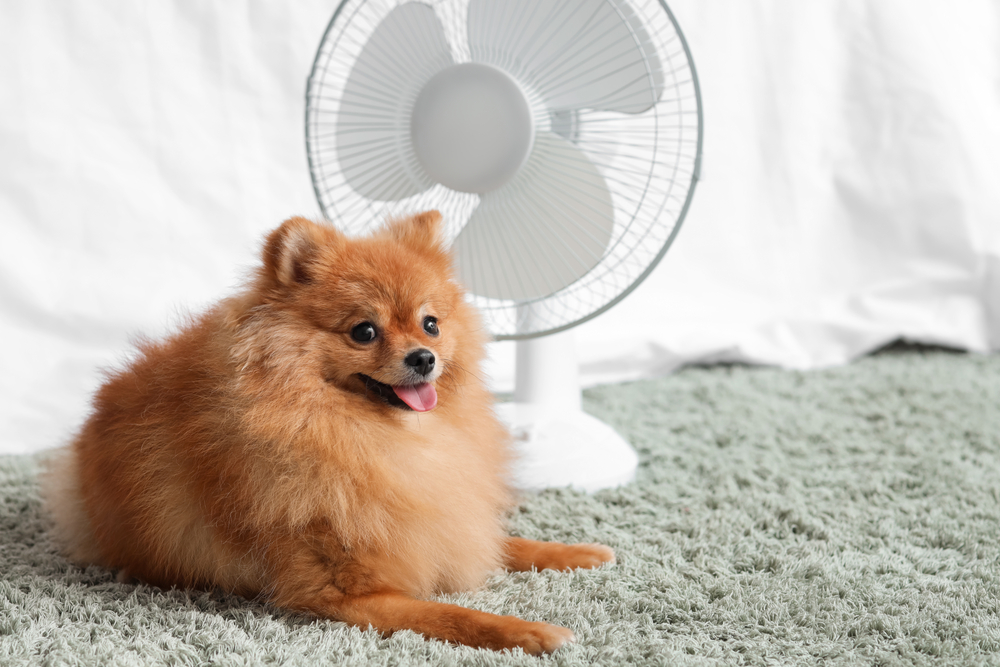
Long-Term Strategies to Prevent Overheating
For your dog’s health, keeping them from getting too hot is very important, especially when it’s hot outside or when they’re doing physical activities. To keep your dog cool and comfortable, try these things:
Provide Plenty of Fresh Water: Make sure your dog always has fresh, cool water available, especially when it’s warmer outside.
Avoid the Heat of the Day: When it’s cooler, like early in the morning or late at night, walk or give your dog an exercise.
Create Cool Spaces: There should be shady spots in your yard so that your dog can rest without getting too much sun. Inside, make sure your home has good air flow and stays cool.
Limit Exercise in Hot Weather: When it’s hot outside, you should do less intense exercise for shorter periods. Long, hard activities are not as good as short walks done more often.
Use Cooling Products: You could use cooling mats, vests, or bandanas on your dog to help keep his body temperature down.
Groom Regularly: Take good care of your dog’s fur. You might want to shave off your dog’s fur, but talk to your vet first because fur can also keep your dog warm.
Never Leave Your Dog in a Car: Even on a mild day, the temperature inside a car can rise very quickly, and in just minutes, someone can die from heatstroke.
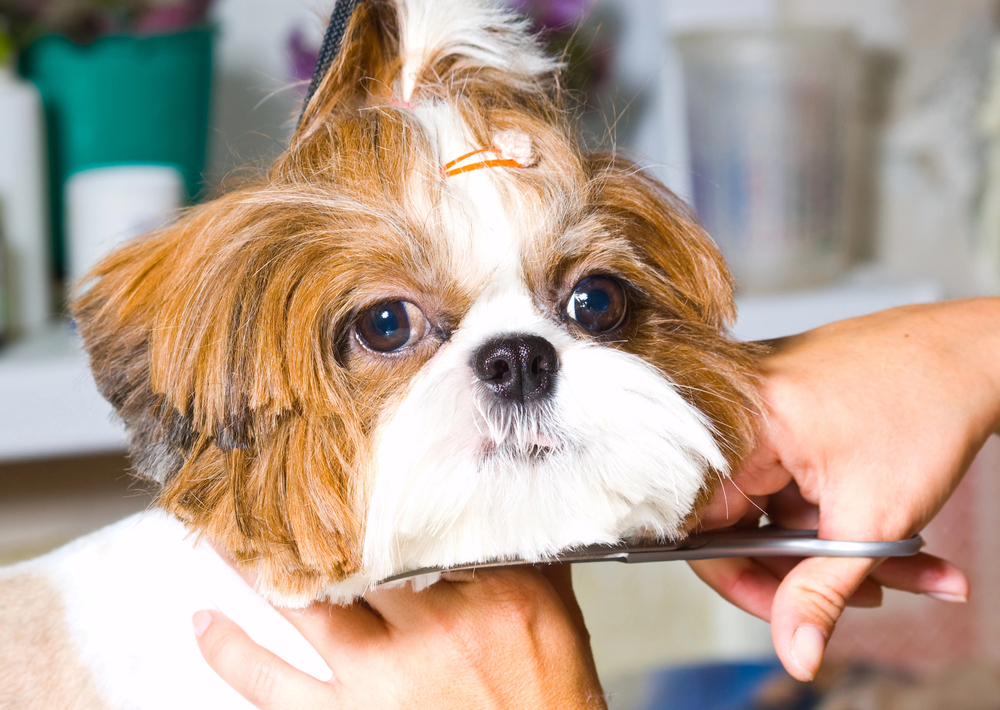
Specific Considerations for Different Dog Breeds
Some breeds are more likely to get too hot than others, so extra care needs to be taken:
- Brachycephalic Breeds: Dogs with short noses, like Bulldogs, Pugs, and Boxers, can get too hot because their airways aren’t as big.
- Thick-Coated Breeds: In warm weather, dogs with thick fur, like Huskies and Malamutes, may get too hot more quickly.
- Senior Dogs and Puppies: Puppies and older dogs have trouble controlling their body temperature as well, which makes them more likely to get heat stress.
- Overweight Dogs: A dog is more likely to get too hot if it is carrying extra weight.
Encouraging Hydration
It’s important to keep your dog hydrated. Here are some ways to help people stay hydrated:
- Add Ice Cubes: To keep your dog’s water bowl cool and appealing, put ice cubes in it.
- Hydrating Treats: Give your dog fruits that are safe for them, like watermelon or cucumber, which are high in water.
- Flavored Water: Add a splash of low-sodium chicken broth to your dog’s water to make it more enticing.
Travel Tips
When traveling with your dog, make extra sure they don’t get too hot:
- Portable Fans: Battery-powered fans can help keep the air moving in your car.
- Cooling Pads: You should bring cool pads for your dog to lie on on the trip.
- Frequent Stops: Stop often so your dog can drink water and go to the bathroom. This will also give them a chance to stretch and cool off.

When to See a Vet
Get your dog to the vet right away if it shows severe signs of overheating, like collapsing, having seizures, or not responding. Even if they seem to get better after the first cooling efforts, you should still take them to the vet to make sure there aren’t any long-term effects or problems.
Post-Overheating Care
It’s important to make sure your dog rests and fully recovers after an overheating episode:
- Rest: Give your dog a cool, quiet place to rest.
- Hydration: Keep giving your pet fresh water, and if your vet tells you to, look into electrolyte solutions.
- Monitor: Watch your dog for any signs that the symptoms or problems are getting worse.
Educating Yourself and Others
Being aware is the best way to keep dogs from getting too hot. Learn about the risks, and then tell your friends, family, and other pet owners what you’ve learned. No matter what the weather is like, you can help keep your dog safe and healthy by knowing the signs of overheating and what to do about them.
Overall
Dogs getting too hot is a serious problem that needs to be fixed quickly and effectively. You can keep your dog safe from the dangers of heat stress by knowing the signs, how to safely cool your dog down, and how to avoid it in the first place. Remember that if you’re not sure what to do, you should always talk to a vet to get the best advice for your dog’s needs.
Stay vigilant, keep your dog cool, and enjoy a safe, happy summer together. You can find more pet care tips and advice at Fon Jon Pet Care.




